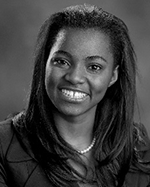
Ange-Therese Akono, PhD
Northwestern University
Dr. Ange-Therese Akono is an assistant professor and Louis Berger Junior professor in the Department of Civil and Environmental Engineering at Northwestern University. Dr. Akono holds a PhD (2013) and an MSc (2011) from the Massachusetts Institute of Technology (United States), along with an MSc (2009) from the École Polytechnique (France). Dr. Akono's honors include the NCSA faculty fellowship (2016-2017), the ASCE New Faces of Civil Engineering Professionals Award (UIUC, 2016), the ASCE nomination for the DiscoverE New Faces of Engineering Award (UIUC, 2016), the Academy for Excellence in Engineering Education Collins Fellowship (UIUC, 2015), and the MIT Energy Initiative Fellowship (MIT, 2009). Dr. Akono's laboratory investigates fracture and failure mechanisms in complex materials systems from the molecular level up to the macroscopic scale. This research is articulated over three main thrusts: environment-friendly and high-performance structural materials, natural and nano-engineered biomaterials, and geological materials such as shale or rock. Dr. Akono's areas of expertise include nano-mechanics, fracture analysis, nanotechnology, advanced experimental testing and multiscale modeling.
|
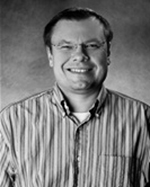
Alexey Bezryadin, PhD
University of Illinois, Urbana-Champaign
Dr. Alexey Bezryadin is a tenured faculty member of the Department of Physics at the University of Illinois at Urbana-Champaign. He joined the Department in August of 2000 and now holds the rank of professor. His research findings have been published in a monograph titled Superconductivity in nanowires and over seventy research articles in high-impact journals, such as Physical Review B, Physical Review Letters, Science, Nature, and others. He received both the National Science Foundation CAREER award and Alfred Sloan Research Fellowship in 2002. He received the Xerox award in 2004 and was recognized as a Fellow of the American Physical Society in 2014 for his work on nanometer-scale conductors. During the last 19 years, Dr. Bezryadin has been actively engaged in research funded by the National Science Foundation, the Department of Energy, and the Office of Naval Research. His areas of expertise include high-precision electric transport measurements, nanometer-scale electronic system and devices, low-temperature experiments, and magnetic and microwave measurements.
|
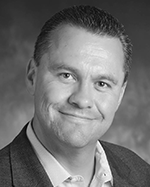
Kenneth T. Christensen, PhD
University of Notre Dame
Kenneth T. Christensen is a Professor and the College of Engineering Collegiate Chair in Fluid Mechanics at the University of Notre Dame, with a joint appointment in the Departments of Aerospace & Mechanical Engineering and Civil & Environmental Engineering & Earth Sciences. He joined the Notre Dame faculty after 10 years on the faculty at the University of Illinois at Urbana-Champaign. He directs a research group that pursues experimental studies of turbulence, geophysical flows, and microfluidics and is a WPI Principal Investigator in the Carbon Dioxide Storage Division of the International Institute for Carbon-Neutral Energy Research (I2CNER) based at Kyushu University in Fukuoka, Japan. He also served as the Associate Director of the I2CNER Satellite Center at Illinois from 2011–2014. He is a Fellow of both the American Physical Society (APS) and the American Society of Mechanical Engineers (ASME), an Associate Fellow of the American Institute of Aeronautics and Astronautics (AIAA), and serves on the Editorial Boards of Experiments in Fluids and Measurement Science and Technology. Past recognition includes the AFOSR Young Investigator Award (2006), the NSF CAREER Award (2007), the Francois Frenkiel Award for Fluid Mechanics from APS-DFD (2011) and, most recently, the Dean’s Award for Excellence in Research (2012) from the College of Engineering at Illinois. Dr. Christensen received his B.S. in Mechanical Engineering from the University of New Mexico in 1995, an M.S. in Mechanical Engineering from Caltech in 1996, and a Ph.D. in Theoretical and Applied Mechanics from the University of Illinois in 2001.
|
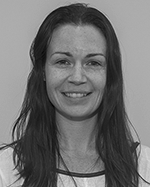
Jennifer Druhan, PhD
University of Illinois, Urbana-Champaign
Dr. Jennifer Druhan is an assistant professor in the Department of Geology at the University of Illinois Urbana-Champaign. She joined the faculty in 2015 after completing a National Science Foundation postdoctoral fellowship at Stanford University. She holds a PhD from the University of California Berkeley, Department of Earth and Planetary Sciences, and an MS from the University of Arizona, Department of Hydrology and Water Resources. Dr. Druhan’s research centers on the relationship between physical structure and chemical reactivity in aquifers. She is a long-time associate of the Lawrence Berkeley National Laboratory and collaborates with Earth Science Division staff scientists in development and application of reactive transport software. She has extensive experience in both imaging and modeling techniques pertinent to geologic CO2 storage and was a member of the CO2 Capture Project (CCP) phase 3 at Stanford University.
|
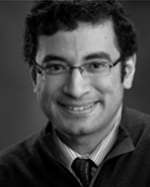
Ahmed Elbanna, PhD
University of Illinois, Urbana-Champaign
Dr. Ahmed Elbanna has been an assistant professor in the Department of Civil and Environmental Engineering at University of Illinois at Urbana-Champaign since 2013. He holds a PhD in civil engineering (2011) and an MS in applied mechanics (2006), both from the California Institute of Technology, and an MS in structural engineering (2005) and BS in civil engineering (2003) from Cairo University. He was a postdoc in the Physics of Complex Systems group at UCSB (2011–2012). His honors include the National Certificate of Excellence in Engineering (2003), George Housner Fellowship (2005), and National Center for Supercomputing Applications Fellowship (2015). At the University of Illinois at Urbana-Champaign, Dr. Elbanna currently leads the Mechanics of Complex Systems Laboratory (MCSlab@UIUC). His research focuses on developing computational and analytical models for complex material behavior such as friction, adhesion, fracture, and viscoplasticity, and elucidating the implications of these phenomena, in lieu of other microstructural geometric features, on fracture toughness and optimality in multiscale systems.
|
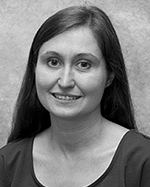
Angela Goodman, PhD
National Energy Technology Laboratory
Dr. Angela Goodman is a Physical Scientist at the National Energy Technology Laboratory (NETL) whose research interests are focused on CO2 sequestration in geologic reservoirs with respect to storage capacity and injectivity; stochastic modeling of storage resource; CO2 capture from power plants using high surface area coordination polymers, metal organic frameworks, and zeolitic imidazolate frameworks; and characterization of gas, liquid, and solid interactions using infrared spectroscopy. She is currently the Technical Portfolio Lead for Carbon Storage focusing on Resource Assessments. Her resource assessment work directly addresses the Strategic Center for Coal’s program goal of predicting storage capacity to ±30% accuracy by further developing and refining CO2 storage methods for geologic formations. A suite of methodologies are being developed and evaluated to quantitatively assess storage resource for reservoirs, including saline formations, oil and gas reservoirs, unmineable coal seams, and organic-rich shale. Dr. Goodman earned her Ph.D. in Physical Chemistry at the University of Iowa in 2000, where her research focused on the chemical balance of the atmosphere. Dr. Goodman has been a research physical scientist with NETL since 2001.
|

Kristian Jessen, PhD
University of Southern California
Kristian Jessen is Associate Professor in the Mork Family Department of Chemical Engineering and Materials Science at University of Southern California. He holds B.Sc., M.Sc. and Ph.D. degrees in Chemical Engineering from the Technical University of Denmark. Dr. Jessen is the co-founder of the consulting company Tie-Line technology ApS that specializes in pressure-volume-temperature (PVT) software for design and optimization of gas injection processes. He has authored and co-authored numerous technical papers in the area of modeling and simulation of enhanced oil and gas recovery by gas injection processes. His current research activities include CO2 storage in subsurface formations and characterization and modeling of mass transfer and sorption phenomena in the context of unconventional oil and gas resources.
|
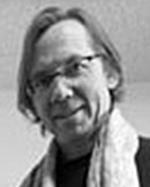
Paul Johnson, PhD
Los Alamos National Laboratory
Dr. Paul Johnson obtained his PhD in physical Acoustics and geophysics from the Sorbonne (Paris VII), after obtaining an MS degree in geophysics from the University of Arizona, and a BS degree in geology from the University of New Mexico. He is a Fellow of the Acoustical Society of America, the American Geophysical Union and the American Physical Society. Dr. Johnson’s work includes studies in earthquake fault processes, nonlinear elasticity in Earth materials, time reverse acoustics, general acoustics, seismology, and earthquake strong ground motion.
|
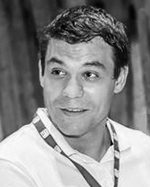
Roman Makhnenko, PhD
University of Illinois, Urbana-Champaign
Dr. Roman Makhnenko received his undergraduate degree in mechanics and applied mathematics at Lomonosov Moscow State University, Russia, in 2007. He then obtained his MSc (2009) and PhD (2013) degrees in geological and civil engineering from the University of Minnesota-Twin Cities. From 2013 to 2016, Roman worked as a postdoctoral researcher and lecturer at the Swiss Federal Institute of Technology in Lausanne (EPFL, Switzerland). Dr. Makhnenko has expertise in geomechanics and development of novel methods in laboratory characterization of fluid-saturated geomaterials under elevated temperatures and pressures with applications to deep CO2 storage, gas shales, and hydraulic fracturing. His current research is related to assessment of geological storage of CO2, including thermo-hydro-mechanical and petrophysical characterization of possible host rock (sandstones and limestones) and caprock (shales) in contact with high-pressure CO2.
|
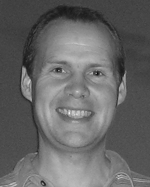
Volker Oye, PhD
NORSAR
Dr. Volker Oye graduated Goethe University Frankfurt, Germany in 2000 (Diploma thesis on true amplitude migration) and made a PhD at University of Oslo and NORSAR in 2004 on Observation and Analysis of Microearthquakes. In the following years Oye worked on induced and triggered microseismicity in various environments such as mines, hydrocarbon reservoirs, geothermal reservoirs, CO2 storage and also on lab-scale acoustic emissions. Since 2013 Oye is head of the Department on “Earthquakes and the Environment” at NORSAR.
|
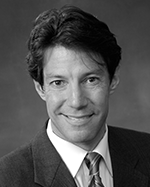
John Popovics, PhD
University of Illinois, Urbana-Champaign
Dr. John S. Popovics is a professor in the Department of Civil and Environmental Engineering at the University of Illinois at Urbana-Champaign and also holds the title of CEE Excellence Scholar. His research findings have been published in four chapters in books and over 70 articles in peer-reviewed technical journals. He received the National Science Foundation CAREER award in 1999, the ASNT Fellowship Award in 2012, and the ASNT Faculty Award in 2014. He has been recognized as a Fellow of the American Concrete Institute and the American Society for Nondestructive Testing, and he is a registered professional engineer in the Commonwealth of Pennsylvania. Over the past 20 years, Dr. Popovics has been actively engaged in research funded by the National Science Foundation, the Department of Energy, and The National Academy of Sciences and Engineering, among other agencies. His research program investigates testing, analysis, and novel measurements for infrastructure and geologic materials. His areas of expertise include wave propagation modeling and testing, material nondestructive testing and imaging, and innovative sensing technologies.
|
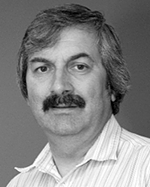
Sergey Stanchits, PhD
Schlumberger
Sergey Stanchits received a PhD in physics and mathematics from Ioffe Physical-Technical Institute of the Russian Academy of Sciences in 1990. He has over 37 years of experience in Acoustic Emission application for research in Rock Mechanics laboratories in Russia, USA, and Germany. For 5 years, he worked for the US Geological Survey and then for the German Research Centre for Geosciences for over 10 years. Since 2010, he is the Head of Acoustic Technology in the Schlumberger Research Center, Fracture Dynamics and Performance Department, investigating hydraulic fracturing of rock by means of advanced Acoustic Emission technique.
|
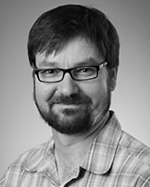
Dustin Sweet, PhD
Texas Tech University
Dr. Dustin E. Sweet holds a PhD (2009) in Geology from the University of Oklahoma and a MSc (2003) and a BSc (2000) in Geology from Boise State University. Upon completion of his PhD, Dr. Sweet worked as an exploration geologist at Chevron Energy Technology Company until he joined the faculty at Texas Tech University in the fall of 2011. During his time at Chevron, Dr. Sweet’s chief role was developing new plays and prospects in new venture opportunities, largely in West Africa. Dr. Sweet’s areas of expertise include process sedimentology, chemical weathering in soil profiles, and stratigraphy. He uses those skills to unravel climatic and tectonic history from the sedimentary record, predominantly within late Paleozoic basins in the United States and Quaternary strata on the Southern High Plains. He currently serves as leader of the Geology Theme for the Center for Geologic Storage of CO2, where he brings his sedimentologic and weathering skills to bear on understanding the character of the interval near the great unconformity in the mid-continent. He enjoys camping with his wife and three boys wherever late Paleozoic strata are exposed.
|
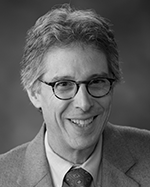
Albert J. Valocchi, PhD
University of Illinois, Urbana-Champaign
Albert J. Valocchi is the Abel Bliss Professor in the Department of Civil and Environmental Engineering at the University of Illinois at Urbana-Champaign. He has been on the faculty at Illinois since 1981. Valocchi’s research focuses upon computational modeling of pollutant fate and transport in porous media, with applications to groundwater contamination, geological sequestration of carbon dioxide, and impacts of model uncertainty on groundwater resources management. He received his B.S. in Environmental Systems Engineering from Cornell University in 1975 and did his graduate studies at Stanford University in the Department of Civil Engineering, receiving his M.S. in 1976 and Ph.D. in 1981. In 2009, he was recognized as a Fellow of the American Geophysical Union.
|
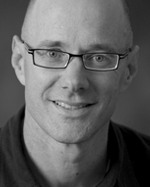
Charles J. Werth, PhD
University of Texas, Austin
Dr. Charles J. Werth is a Professor and Bettie Margaret Smith Chair of Environmental Health Engineering in the Department of Civil, Architecture, and Environmental Engineering at the University of Texas at Austin. He joined the UT faculty in August or 2014, after spending 17.5 years on the faculty at the University of Illinois at Urbana-Champaign. Dr. Werth's research and teaching focus on the fate and transport of pollutants in the environment, the development of innovative catalytic technologies for drinking water treatment, and the mitigation of environmental impacts associated with energy production and generation. Dr. Werth is a Wiley Research Fellow at the Department of Energy’s Environmental Molecular Science Laboratory, and a member of the USEPA's Science Advisory Board. Past recognition includes an Editors Choice Best Paper Award from Environmental Science and Technology (2nd in the category of Technology), recognition for the most cited paper in Journal of Contaminant Hydrology since 2008, a Humbolt Research Fellow Award, a National Science Foundation CAREER Award, and a BP Award for Innovation in Undergraduate Instruction. Dr. Werth received a B.S. in Mechanical Engineering from Texas A&M; University, an M.S. and Ph.D. in Environmental Engineering from Stanford University, and a Ph.D. minor in Chemistry from Stanford University.
|

